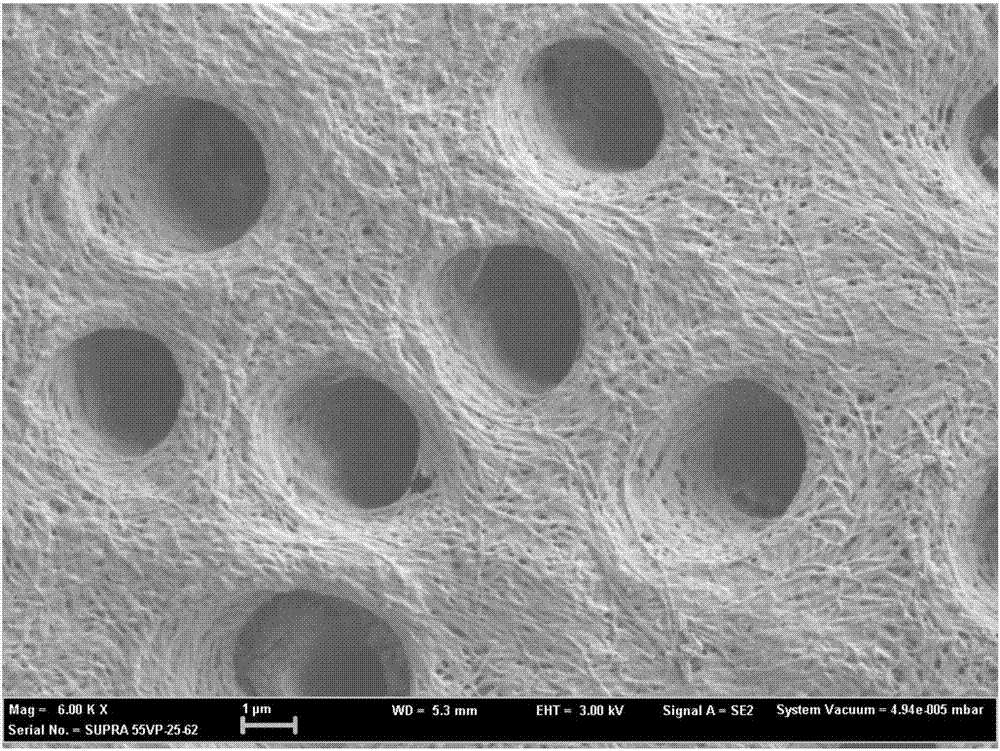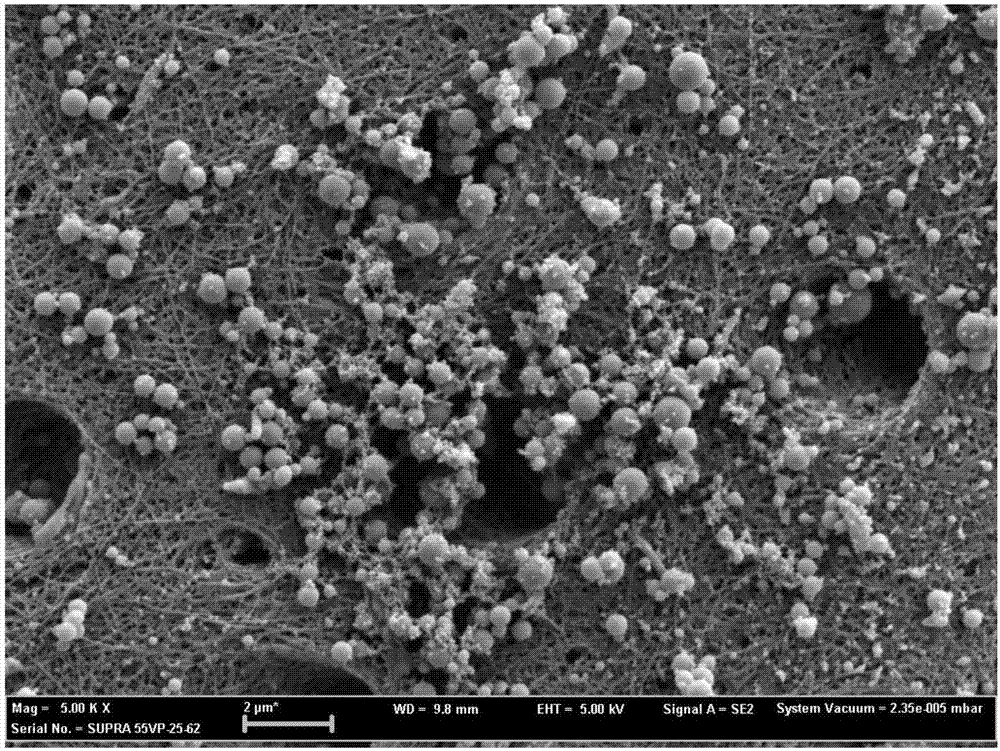Material for desensitizing teeth by sealing dentinal tubules
A technology of dentinal tubules and teeth, applied in dentistry, dental preparations, dental prostheses, etc., can solve the problems of poor tooth surface binding ability, difficult penetration of desensitizers, and short residence time on the tooth surface. Sensitization, broad clinical application prospects, and simple preparation methods
- Summary
- Abstract
- Description
- Claims
- Application Information
AI Technical Summary
Problems solved by technology
Method used
Image
Examples
Embodiment 1
[0031] (1) Synthesis of carboxymethyl chitosan-lysozyme nanogel
[0032] Under normal temperature and full stirring with a magnetic stirrer, add 100 mg of carboxymethyl chitosan to 30 ml of deionized water. After it is completely dissolved, add lysozyme to 5 ml of deionized water to obtain liquid A, and slowly add liquid A to the In carboxymethyl chitosan solution, carboxymethyl chitosan-lysozyme nanogel was obtained. Obtain A solution;
[0033] (2) Formation of desensitizing materials
[0034] Under room temperature and full stirring with a magnetic stirrer, 13.92 mg of dipotassium hydrogen phosphate was added to carboxymethyl chitosan-lysozyme nanogel, and reacted for 15 minutes to obtain liquid B, and 23.52 mg of calcium chloride dihydrate Add it into 5ml deionized water to prepare liquid C, and slowly add liquid C dropwise to liquid B under normal temperature and sufficient stirring with a magnetic stirrer to obtain stable carboxymethyl chitosan-lysozyme-amorphous calciu...
PUM
| Property | Measurement | Unit |
|---|---|---|
| The average particle size | aaaaa | aaaaa |
| Particle size | aaaaa | aaaaa |
| Concentration | aaaaa | aaaaa |
Abstract
Description
Claims
Application Information
 Login to View More
Login to View More - R&D
- Intellectual Property
- Life Sciences
- Materials
- Tech Scout
- Unparalleled Data Quality
- Higher Quality Content
- 60% Fewer Hallucinations
Browse by: Latest US Patents, China's latest patents, Technical Efficacy Thesaurus, Application Domain, Technology Topic, Popular Technical Reports.
© 2025 PatSnap. All rights reserved.Legal|Privacy policy|Modern Slavery Act Transparency Statement|Sitemap|About US| Contact US: help@patsnap.com



